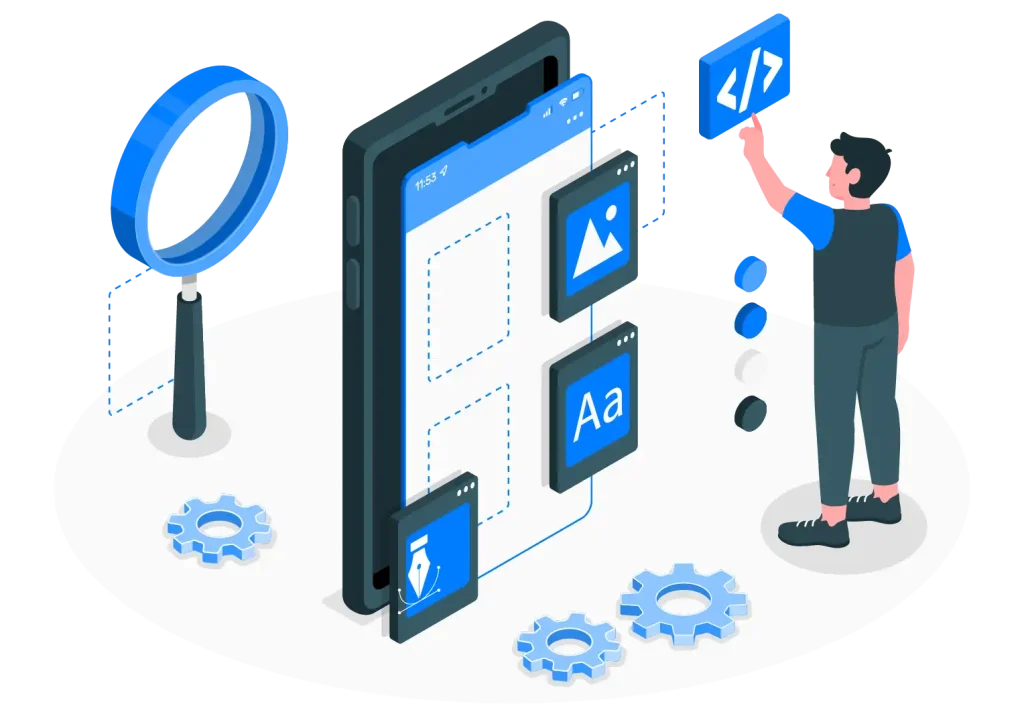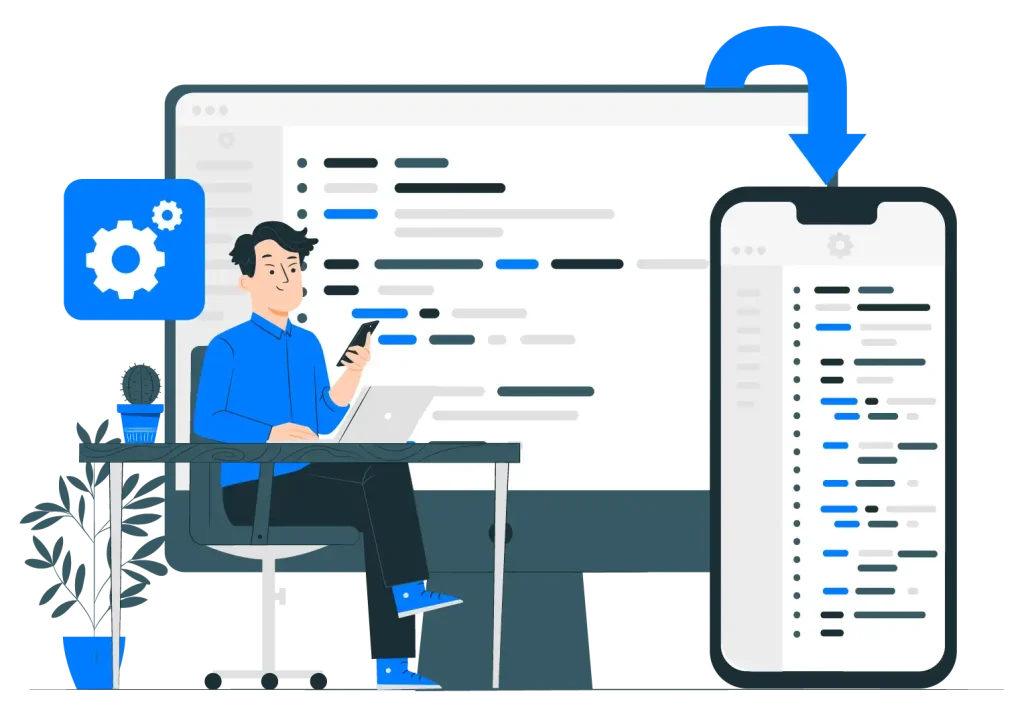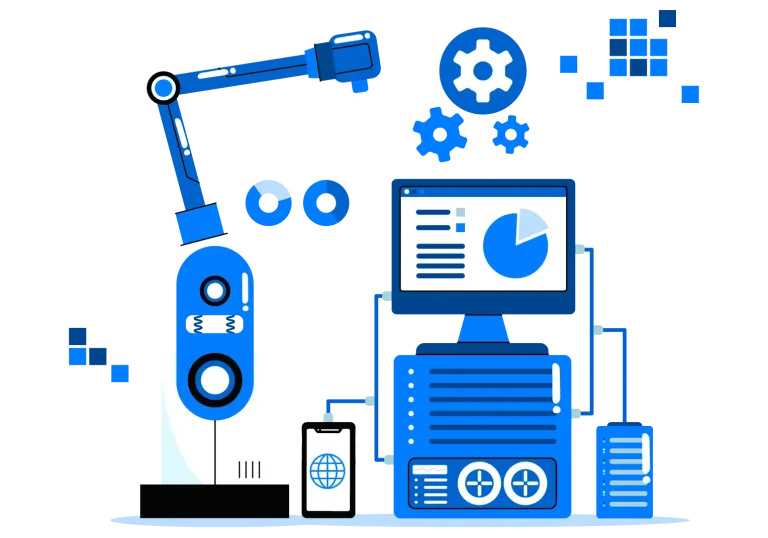Services
Enhancing ERP
This connection enhances efficiency, streamlines processes, and elevates overall business operations by facilitating effective communication between different software platforms.
This connection enhances efficiency, streamlines processes, and elevates overall business operations by facilitating effective communication between different software platforms.
In the fast-paced world of modern business, enterprise resource planning (ERP) systems have become the backbone of organizational operations. Among the leading names in the ERP landscape, Oracle and SAP ERP stands tall, providing comprehensive solutions for businesses to streamline processes, enhance efficiency, and drive growth. In this era of digital transformation, where mobility and user-centric experiences are paramount, the integration of custom mobile and web interfaces with ERP systems opens a new realm of possibilities.
Oracle and SAP ERP has come a long way from its early iterations, which were primarily on-premises solutions. Today, they offer cloud-based ERP solutions that provide scalability, flexibility, and real-time insights for organizations of all sizes. These systems handle a wide range of business functions, including finance, supply chain management, human resources, procurement, project management, and more.
ERP systems like Oracle and SAP are no longer confined to internal operations; they have evolved into indispensable tools that augment the entire business landscape. By facilitating end-to-end integration, data-driven decision-making, and streamlined processes, these systems are playing a pivotal role in optimizing efficiency, reducing costs, and ultimately enhancing the competitiveness of businesses.
According to various industry reports and surveys, the adoption rate of ERP systems among organizations typically falls within the range of 50% to 70%. This means that roughly half to two-thirds of businesses have implemented some form of ERP software to manage their core business processes.
User interfaces (UIs) serve as the gateway between users and ERP systems. A well-designed UI can significantly impact user adoption, productivity, and overall user satisfaction. As businesses expand and workforces become more distributed, the demand for accessible and intuitive interfaces has grown exponentially. This is where custom mobile and web interfaces step in to revolutionize the ERP experience.
When an organization implements an ERP system, it often has unique processes, data flows, and business requirements. Off-the-shelf or generic interfaces might not align perfectly with these specifics. Custom interfaces are designed by considering the organization’s particular needs, business rules, and data structures. This customization ensures that the interface is closely aligned with the way the organization operates, making it more intuitive for users.
Custom interfaces are tailored to the specific needs of users, ensuring that the UI is intuitive and aligned with the users’ workflow. This leads to increased user satisfaction and reduced training time for new users.


Mobile interfaces refer to user interfaces specifically designed for smartphones, tablets, and other mobile devices. In the context of ERP systems, mobile interfaces allow users to access the functionalities and features of the ERP software through their mobile devices. This means that users, including decision-makers, can interact with the ERP system and perform essential tasks even when they are not physically present at their desks or in the office.
This level of mobility empowers decision-makers to stay connected to real-time data, accelerating response times and improving agility.
Custom interfaces in ERP systems can be tailored to showcase specific data and Key Performance Indicators (KPIs) that are essential for users’ decision-making. By presenting relevant information prominently, users can quickly access insights that guide their choices. This focused approach streamlines decision-making processes, enabling users to make informed and timely decisions that align with their business goals and strategies.


Custom interfaces within ERP systems have the capability to integrate cutting-edge technologies such as Artificial Intelligence (AI), machine learning, and data analytics. This integration empowers businesses to gain deeper insights from their data and automate routine tasks. AI and machine learning algorithms can analyze patterns and trends in real-time data, providing valuable insights for better decision-making. Additionally, automation of repetitive tasks enhances efficiency, freeing up resources to focus on more strategic initiatives.
As businesses evolve, their processes may change. Custom interfaces can be easily adapted to accommodate these changes without major disruptions to operations.

Conducting user research, creating user journey maps, and gathering feedback throughout the development process are crucial to creating interfaces that truly resonate with users.
Custom interfaces should seamlessly integrate with Oracle ERP systems, ensuring data consistency and reliability. APIs and integration platforms play a pivotal role in achieving this cohesion.
Given the diversity of devices and screen sizes in use today, responsive design is essential. Interfaces must adapt gracefully to various devices, providing a consistent experience regardless of the platform.
As custom interfaces access sensitive business data, robust security measures must be in place. Encryption, authentication protocols, and compliance with data protection regulations are non-negotiable aspects.
Efficient performance is paramount for user satisfaction. Optimization techniques, such as caching and minimizing data transfers, contribute to snappy and responsive interfaces.
Technology evolves rapidly, and user needs can change. Continuous iteration and improvement are necessary to keep the custom interfaces aligned with business goals and user expectations.